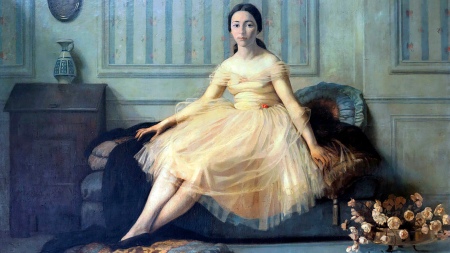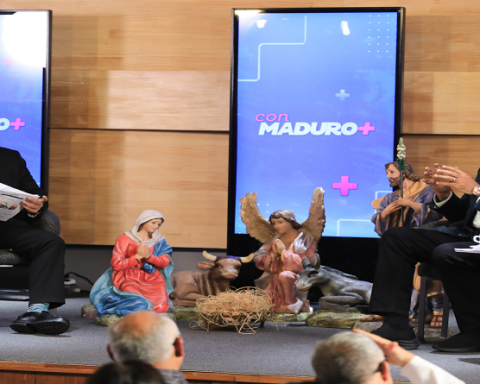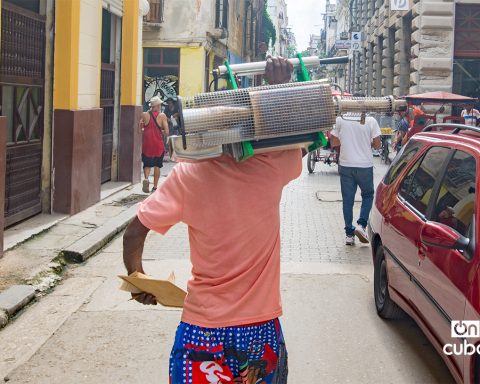“Historias entre Lienzos” is an unprecedented virtual archive, with free access, created by the young researchers Paloma Etenberg and Guadalupe Lobeto, who three years ago began the arduous task of recovering the life and work of Argentine plastic artists from the 19th century who They have been very relevant on the national art scene, many of them little recognized, others very active and awarded, with work that even integrates some of the collections of the most important museums in the country, but that have been erased from the canon of the history of art. Argentine art.
Lola Mora, Raquel Forner, Luisa Isella, Julia Wernicke, Grete Stern, Eurgenia Berlin Sarmiento and Procesa Sarmiento or Julie Méndez Ezcurra. They are painters, draughtsmen, engravers, photographers and sculptures, sometimes unpublished, others exhibited in local artistic meccas of the time but later made invisible: They do not appear in books, they are not taught in the traditional curricula of universities, and they practically do not guide museum exhibits.
The platform www.entrelienzos.org is the result of a work that began when Etenberg and Lobeto, students of Communication and Humanities, respectively, at the San Andrés University, realized the almost non-existent information circulating on the Internet about plastic artists that they had been discovering in a subject dedicated to gender in art history, responsibility of Georgina Gluzman, and that involved a virtual ant jobthe bulk of the first part of the investigation was during the mandatory isolation of the Covid pandemic, and that He took them through museum assets, private collections and family archives.
“There is no information online but there is not much information in general either –says to Telam Dove Etenberg-, unless you know very well where to look for it. If you spend hours and hours in the national archive, that information exists, but it is in boxes and envelopes, not very accessible. Unless you are not only interested, but you dedicate yourself to this and have the specific contacts to advise you, You have a lot of obstacles to get to the work of these women”.

Today the archive is made up of 40 artists with their corresponding biographies, works and contexts. With a lighter, more secular Instagram B-side, which adds brief profiles of artists in the process of investigation and information that surrounds the interests of this work, declared “of interest” by the Chamber of Deputies of the Nation because “it is essential to contribute to guarantee equal opportunities between men and women which has historically been alien to the world of art”.
“Part of our objective was to shorten this search process, what we do on this platform is present these artists” indicates the 26-year-old researcher Bibí Zogbé, Ana Weiss de Rossi, Carlota Stein They are part of that virtual window, “it’s not that they worked on the margins of the artistic circuit, it’s not that they painted at home as a hobby, they are painters, photographers, sculptors, engravers were really professionalized”, iindicates Lobeto.
Released in 2021 in that attempt to repair the paucity of information about artists who lived among the XIX and XX centuries -Elina Querel and Anita Payró are an example of that the archive adds to the biographies and high-quality images the location of the worksas well as supplementary bibliography recovered from the disinterest of a masculine and patriarchal canon; and he comes to add his grain of sand to enrich the history of art with other narrations and, very probably, with a concept of loss -of documents, of works- still very incipient to be fully dimensioned.

Including a few female names in this canon, as heroines -such as those of Raquel Forner or Lola Mora, which is also included in this file-, has not served to questioning the sex-generic bases of the history of art and that is also evidenced by this researchin which more than 500 artists from some twenty collections from all over the country were surveyed, seeking to “contribute to updating the history of Argentine art, with the enrichment of the national cultural heritage and with the enhancement of the artists and their jobs.”
“The line of investigation was cut off in the first half of the 20th century because of these artists there are already data and testimonies on the Internet says Etenberg. The 19th century is like the jewel that we take care of, we prioritize it because there is very little of that stage. In our database we have hundreds and hundreds of names, not all of them investigated, that are part of the survey of work presented by artists from all over the country.”
That unit of measurement that enthrones the preferably white, heterosexual male and of a certain social condition, thus opens up to the realities of other creators of cultural heritage.

“A group that caught our attention is that of the artists who painted the homeland”points out Lobeto, as Andrea Bacle, Sofía Posadas, María Obligado de Soto y Calvo or Léonie Matthiswho had the particularity of a marked interest in historical research, which is why they did not recreate contemporary events, but rather His images of Plaza de Mayo are reconstructions that are the product of those personal investigations.
Many of their names are probably unknown, although many of their paintings are part of the national patriotic imaginary, based on the images of heroes they portrayed and who, as in the case of “The last dream of General San Martín”, by Posadas, was the iconography of a school text.
This file also searches debunk the idea that these artists were marginal to the central art circuits, “in these artists there was a genuine interest in being part of an artistic field and a professionalization in that sense”, indicates Lobeto. They were not amateurs or dilettantes (they sold work at a fair value, they were portraitists, they exhibited in large museums), it was criticism that excluded them from the history of art that, as a discipline, historically it has been considered that men have a greater capacity to create cultural capitalhe. It is enough to refer to the concept of ‘cultural heritage’, based on the idea of the ‘pater’, a male figure who gives authority.
“Something wonderful” along the way, Etenberg points out, was that since we launched the website, many people began to send us information about these artists. Our intention is that this interdisciplinary and dynamic project continue to grow over time” and that it “works as a starting point to generate spaces for study, debate and reflection that transcend virtuality”.

etenberg She was a 2021-22 Chevening Fellow of the Master of Arts Administration and Cultural Policy at Goldsmiths, from the University of London and from the Peggy Guggenheim Collection; She worked at the Museum of Modern Art in Buenos Aires and researched the gender gap in digital media for the Center for Studies on Media and Society in Argentina, at the University of San Andrés and Northwestern University.

Guadalupe Lobeto resides in New York, where he graduated with a Master of Arts Administration from Columbia University; She worked at the Museum of Contemporary Art of Buenos Aires (Macba) and at the Peggy Guggenheim Collection in Venice, interested in cultural heritage policies and digital projects that promote access to the arts, opera and classic cinema.


















